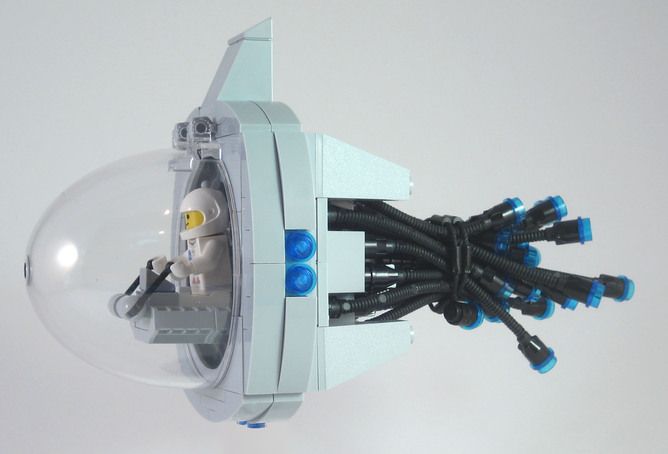How to Test the Twin Paradox Without Using a Spaceship (Op-Ed)

This article was originally published at The Conversation. The publication contributed the article to Live Science's Expert Voices: Op-Ed & Insights.
Forget about anti-ageing creams and hair treatments. If you want to stay young, get a fast spaceship. That is what Einstein’s Theory of Relativity predicted a century ago, and it is commonly known as “twin paradox”.
Imagine two twins. They are identical, except for one thing, one of them has a very advanced and expensive spaceship. The first twin remains on Earth, while the other travels to a distant star and back at velocities close to the speed of light.
When they meet again, the Earth-dwelling twin has aged a lot more than the travelling twin. This is because of what Einstein called time dilation. He predicted that clocks experiencing different accelerations measure time differently. Puzzling as it may seem, these time-dilation effects have been tested in the laboratory many times, and are routinely taken into account by the Global Positioning System (GPS).
The GPS is able to provide you with your position by timing very precisely the signals emitted by satellites, and to this end it needs to take into account the time dilation due to the different accelerations of the satellites. While GPS is one of the most precise systems we have, it can locate your smartphone with an error margin of a few metres.
The precision could be improved by using the most precise clocks that we know on Earth, known as quantum clocks because they are ruled by the laws of quantum mechanics. There are plans funded by space agencies to launch these clocks into orbit. It is natural to think that a GPS consisting of quantum clocks would also need to take into account relativistic effects. However, we do not fully understand how to combine quantum mechanics and relativity. The inability of unifying both theories remains as one of the biggest challenges of modern science.
Quantum entanglement
Predictions in the 1970s said that there is a physical phenomenon that is both quantum and relativistic called the Dynamical Casimir Effect. But it wasn’t until 2011 that an experimental setup could be developed to test the prediction.
Sign up for the Live Science daily newsletter now
Get the world’s most fascinating discoveries delivered straight to your inbox.
Here is what theory predicted: if light is trapped between mirrors that move at velocities close to the speed of light, then they will generate more light than there is in the system. Even if initially there is no light between the mirrors, just vacuum, light shows up because the mirror turns the quantum vacuum into particles.
This is supposed to happen because vacuum at the quantum level is like a sea of pairs of particles that are constantly emitting and absorbing light. They do this at incredible speeds, but if the mirror moves that fast too some of these particles are reflected by the mirror before disappearing and can be observed. But setting up such a system has proved difficult.
In 2011, this difficulty was circumvented in the experiment conducted by Per Delsing at Chalmers University of Technology in Sweden. In this case the mirrors were different. They were magnetic fields inside a Superconducting Quantum Interferometric Device (SQUID), but they behaved exactly like mirrors, making light bounce back and forth. Unlike physical mirrors, these magnetic fields could be moved at incredible speeds.
Einstein used to think of clocks as light going back and forth between mirrors. Time can be inferred from the distance between the mirrors divided by the speed of light, which remains constant no matter what. But he never thought about particles being created by motion, a prediction that was made many years after his death.
Relativistic mirrors
In recent work, with colleagues at the University of Nottingham, Chalmers University and University of Warsaw, we have taken inspiration from the 2011 experiment. We propose using a similar setup to test different aspects of the twin paradox using a physical system, which haven’t been tested so far. Although it won’t involve human twins, the possibility of achieving enormous speeds and acceleration allows the observation of time dilation in a very short distance.
Also, all previous experiments that have tested the theory have involved atomic clocks, which are “point-clocks” – that is, what measures time in these atomic clocks is confined to a tiny point in space. Our experiment would instead use something that has finite length. This is important because, along with time, Einstein’s theory predicts that length of the object changes too. We believe our experiment would test that aspect of the theory for the first time.
We have found that particle creation by motion, which was observed in 2011, has an effect on the difference in time between the clock that is moving and the one that is static. Using this setup, while we can reconfirm that time dilation occurs, the more interesting application would be to help build better quantum clocks, by means of a better understanding of the interplay between quantum and relativistic effects.
Carlos Sabin receives funding from EPSRC.
This article was originally published on The Conversation. Read the original article. Follow all of the Expert Voices issues and debates — and become part of the discussion — on Facebook, Twitter and Google +. The views expressed are those of the author and do not necessarily reflect the views of the publisher. This version of the article was originally published on Live Science.










